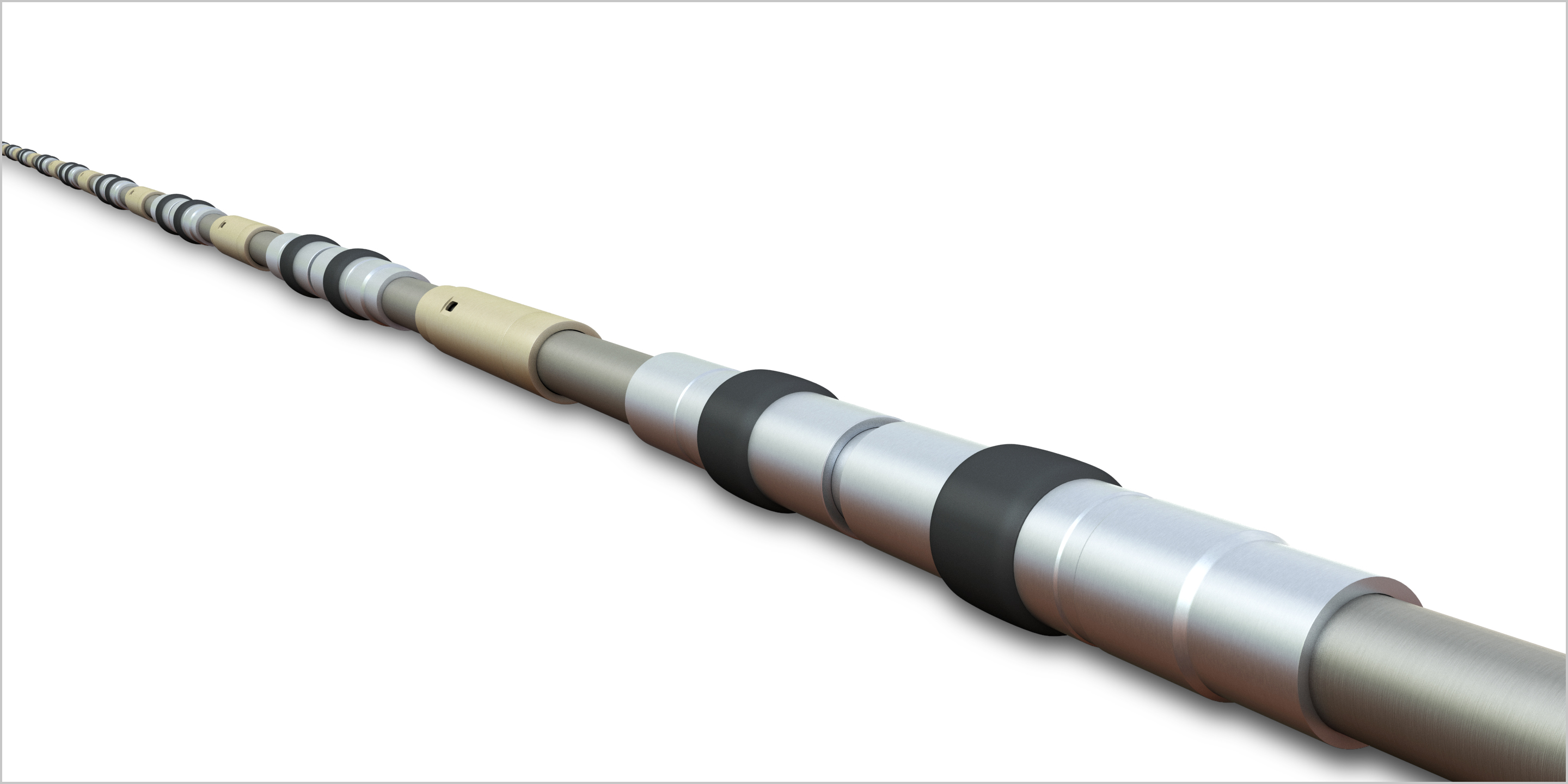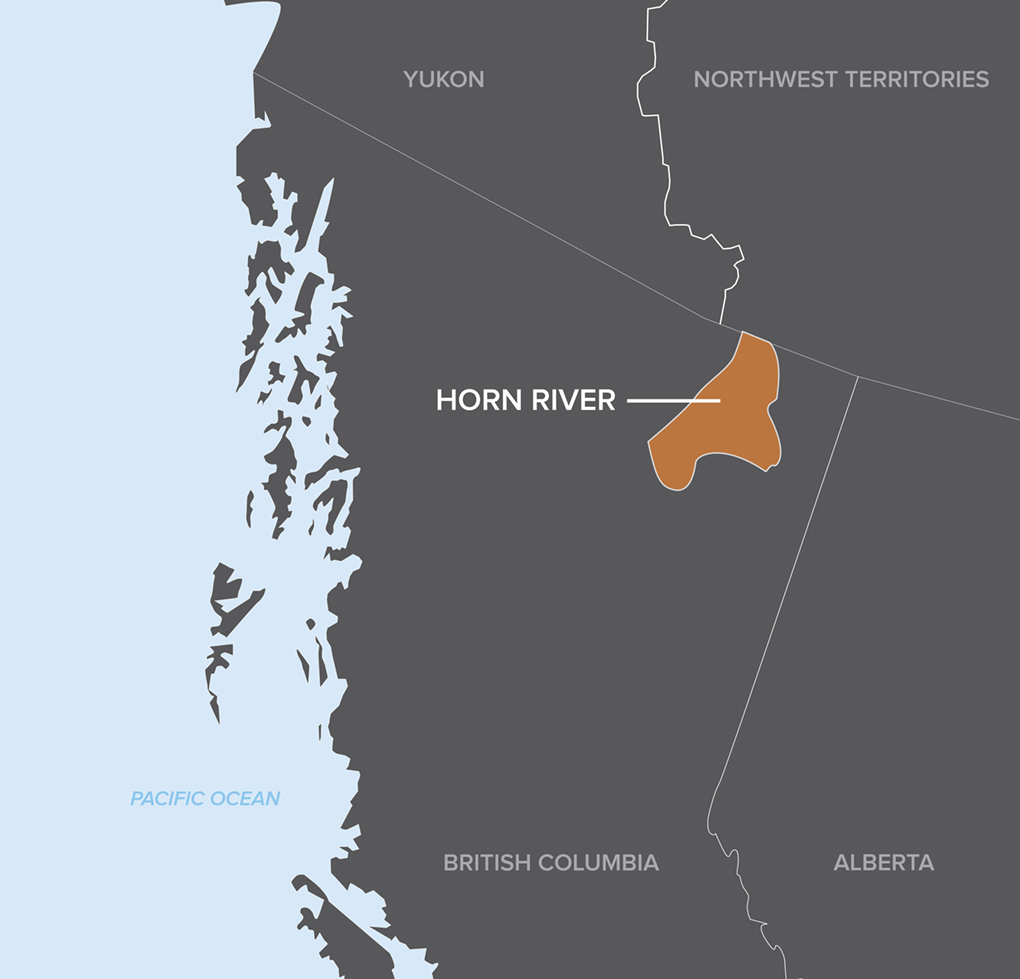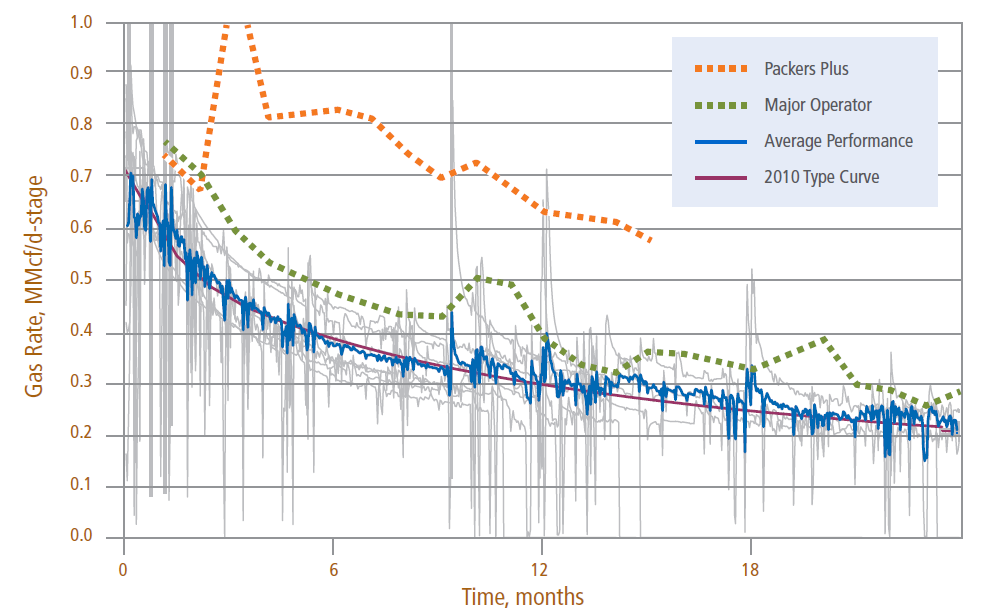StackFRAC doubles production compared to cemented liner well

Background

The Horn River Basin is located in the remote, northeastern corner of B.C. and covers an area of approximately 1.31 million hectares. The basin contains a geologic sequence of shales from the Middle and Upper Devonian periods comprising the Evie, Muskwa and Otter Park members. Due to the advent of horizontal, multi-stage fracturing allowing for the exploitation of tight formations, and the high gas-in-place estimates (100 to 600 Tcf), these shale reservoirs have become the main targets of development in the Horn River. Properties of the formations vary with an average thickness of 140 m and average porosity and permeability measurements of 3.5% and 300 nD, respectively.
In an effort to encourage development of the shale gas reserves in Horn River, the B.C. Oil and Gas Commission (OGC) granted special project status with an extended 3-year confidentiality period in which operators were not required to publically release production results. Since 2002, 21 areas for shale gas experimental schemes have been approved by the OGC in the Horn River. This has allowed operators to experiment with various methodologies to optimize production from this shale gas play.
Challenge
Operators have experienced a multitude of challenges in the development of the Horn River. Weak natural gas prices, an abundant supply in North America and little access to the infrastructure needed for large-scale operations have significantly impeded the number of wells being drilled. The future potential of the Horn River is not well understood due to a lack of drilling data; however, as major operators continue to drill, a more thorough understanding of potential reserves and well deliverability have begun to emerge.
These challenges have pushed operators to significantly increase operational efficiencies in completion methods. However, due to the lack of publically available production data resulting from the existing confidentiality period, more successful completion methods may not be known to all operators working in the area.
Solution
Bucking the trend of major operators using cemented liner, “plug and perf” completion methods, a small operator decided to complete their Horn River horizontal wells open hole using a Packers Plus StackFRAC® multi-stage fracturing system. They chose Packers Plus based on the company’s reputation of providing reliable systems and quality service.
An 8-stage StackFRAC system was designed and installed to a measured depth of 3,900 m and true vertical depth of 2,700 m to target the Muskwa shale. The slickwater fracture treatment was pumped at 10 m3/min over four days, completing two stages per day (Table 1). An average of 200 tonnes of sand in 2,800 m3 of slickwater was placed per stage for a total of 1,600 tonnes of sand and over 22,000 m3 of slickwater.
Results

Recently released production results of the StackFRAC completed well were approximately double the average well performance on a per stage basis reported by a major operator working in other areas of the basin (Figure 1). The average daily production in the last three producing months was 0.60 MMcf/d per stage and cumulative production yielded 2,641 MMcf over 15 months.
To the south, a 10-stage cemented liner plug and perf well, also targeting the Muskwa formation, delivered an average daily production of 0.33 MMcf/d per stage in the same period and 15-month cumulative production of 2,034 MMcf.
The stimulation treatment was pumped at 16 m3/min over 14 days. An average of 300 tonnes of sand in 4,000 m3 of slickwater was placed per stage for a total of 3,000 tonnes of sand and 40,000 m3 of slickwater— almost double that of the StackFRAC well— making the increase in production even more significant.
In addition to the production benefits achieved by the StackFRAC completed well, the fracture treatment was completed in a third of the time (4 vs. 14 days) and with less horsepower than the cemented liner, plug and perf well.
In the face of multiple challenges, major operators working in the Horn River continue to
seek aggressive cost reduction strategies while maximizing their assets. Packers Plus StackFRAC open hole systems have proven to be the most efficient, cost effective method to complete multi-stage horizontal wells and have been shown to provide superior production results in numerous formations worldwide.
